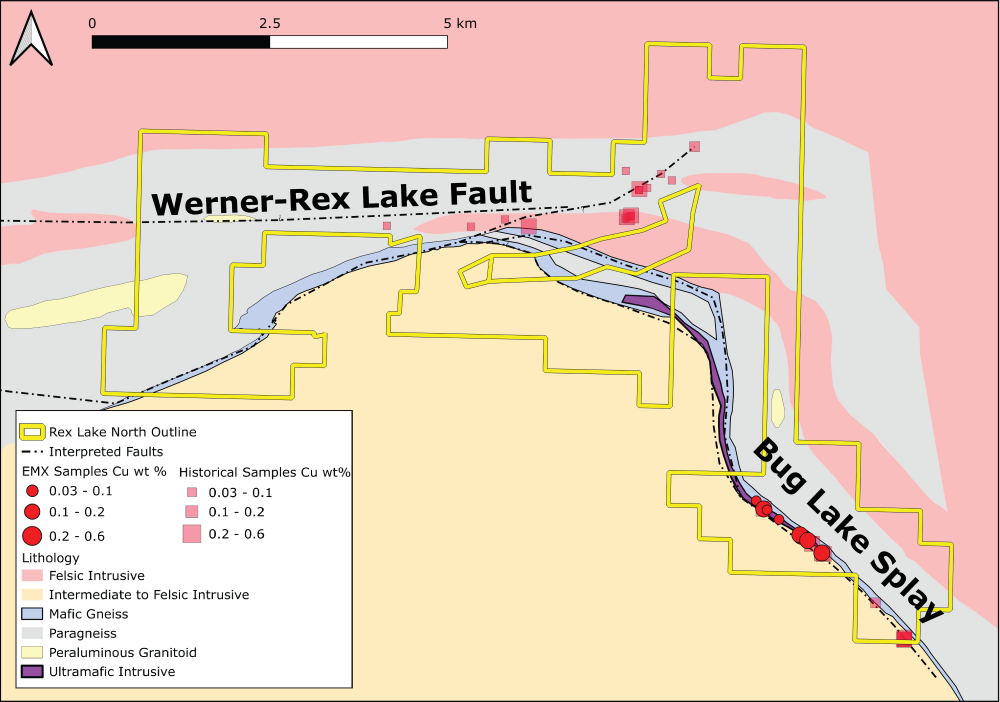Rex Lake North
Rex Lake North is at the boundary of the metasedimentary and plutonic domains in the Separation Lake belt, which divides the two and is the eastern extension of the Bird River greenstone belt in Manitoba(1). This area is the source area of chalcophile-associated mineral production in the English River subprovince(1). Several deposits and mineral occurrences are located along the Werner-Rex Lake Fault. Rex Lake North has similar host rocks as the Werner Lake Co-Cu-Ni deposit which is approximately 30km west of the claims.
Historical work from the from the mid 60’s to late 80’s includes mapping, trenching, sampling, geophysics and drilling(2). An exploration campaign of 18 drillholes was conducted along a N-NW striking splay of the Werner-Rex Lake Fault (Bug Lake occurrence). The drilling identified numerous mineralized intercepts of anomalous Cu, Au and Mo(2). Other positive results from drilling was multiple sub 2% copper over sub 20-foot intervals and multiple ppm Au (Rio Tinto, 1964).
Maps
(1) http://www.geologyontario.mndm.gov.on.ca/mndmfiles/afri/data/imaging/20000006630/20009467.pdf
(2) http://www.geologyontario.mndm.gov.on.ca/mndmfiles/mdi/data/records/MDI52L07NE00023.html
NOTE: EMX has not performed sufficient work to verify the published assay data reported above, and these data cannot be verified as being compliant with NI43-101 standards. These historically reported data should not be relied upon until they can be confirmed, but EMX believes this information is considered reliable and relevant.
*The nearby mines and deposits provide geologic context for EMX’s Properties, but this is not necessarily indicative that the Properties host similar mineralization.
**EMX rock samples were collected in accordance with industry standard best practices. Samples are prepped for sampling before submittal to ALS in (Thunder Bay, ON) where it is prepped for analysis. Accredited control samples (blanks and accredited standards) are inserted into the sample intervals regularly. Samples are weighed, crushed (70% < 2mm), and riffle split into two fractions. One is retained (coarse reject) and the other is pulverized to 85% < 75µm. Pulps are analyzed by ultra-trace ICP-MS (ME-MS61) and Super trace Au-Pt-Pd by fire assay with ICP-MS finish (PGM-MS23). Select samples were run using Trace Elements by Li Borate Fusion ICP-MS (ME-MS81).
Photos

 Click to Enlarge
Click to Enlarge